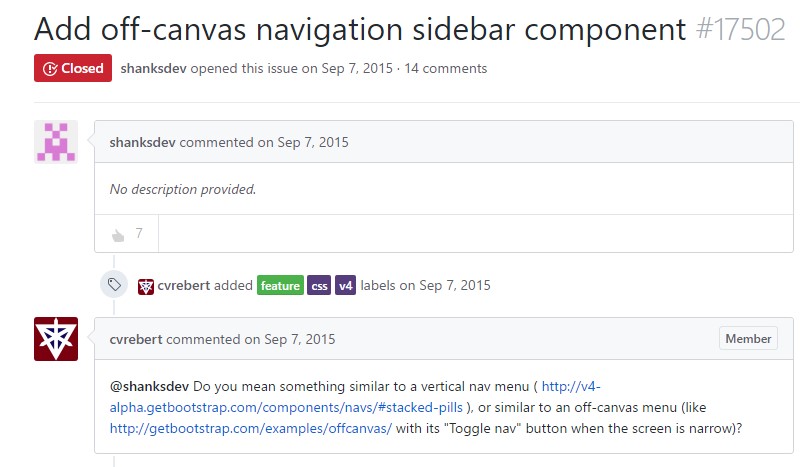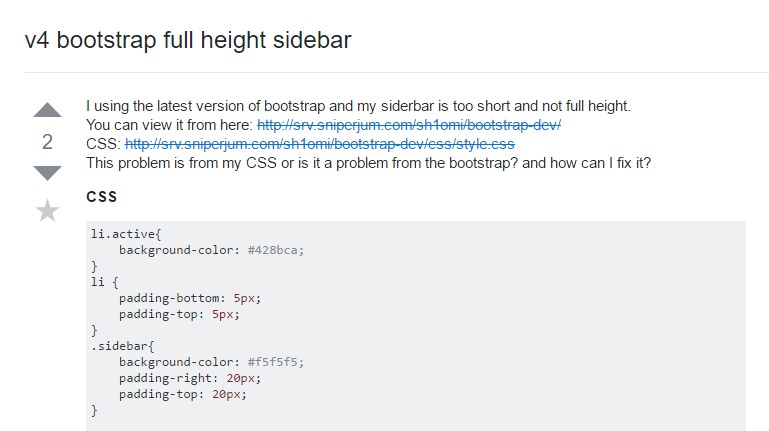Bootstrap Sidebar Collapse
Overview
Throughout the majority of the webpages we recently discover the material ranges from edge to edge in width with a convenient site navigation bar just above and simply simply gets resized once the specified viewport is hit so practically the showcased material fluently utilizes the whole entire width of the page accessible. But at a specific events the desired goal the web pages need to serve require along with the fluently resizing material location a different area of the available display screen width to get specified to a still vertical element with certain hyperlinks and web content inside it-- in shorts-- the popular from the past Bootstrap Sidebar Collapse is wanted.
Efficient ways to utilize the Bootstrap Sidebar Toggle:
This is rather old method however if you definitely need to-- you can certainly set up a sidebar feature with the Bootstrap 4 system which in turn along with its flexible grid system also provide a several classes made specifically for developing a secondary rank navigation menus being simply docked around the webpage.
But let's begin it simple-- through just nesting some rows and columns -- It is pretended this could be the easiest tactic. And by nesting I suggest you can surely gave a .row feature put inside a column one-- it commonly functions the same manner with the exception of the accessible columns in a single line limit-- in case you nest a row within a column you are able to have up to the column's width spanning inner columns inside it before they wrap to a new line.
So let us say we require a right coordinated Bootstrap Sidebar Menu having a number of web content within it and a primary webpage to the left of it. We have to establish the grid tier down to which we need to keep this placement right before the sidebar and the major content stack over each other-- let us claim-- medium and up. Therefore a possible way achieving this could be this:
First and foremost we need to have a container feature to maintain the rows and columns and considering that we are actually designing something a little bit more complex the .container-fluid class could be the best one to specify it to-- in this manner it will definitely regularly spread over the entire detectable width attainable.
Next we require a .row to cover the principal structure into which in our instance would be a wide column for the material and a smaller sized-- for the sidebar-- let's say we'll separate the width in 9 by 3 columns in width. Therefore the primary column element must hold .col-md-9 and the next one - .col-md-3 class added.
Next in these columns we can easily just create some extra .row components and stuff them up up with some material creating first the major webpage and after it-- the elements of the sidebar exactly like two smaller web pages laid out side by side.
A couple of extra suggestions
Additionally in case you need to create a sidebar navigation menu along with the desired .col-* class you can assign it the .sidebar class and wrap the page’s main content into a <main> element applying it the rest width with a .col-* class and appropriate offset equal to the sidebar’s width to make the nicely display side by side.
Also in the event you must generate a sidebar navigation menu together with the needed .col-* class you have the ability to assign it the .sidebarclass and wrap the web page's prime content into a <main> element adding it the rest size using a .col-* class and proper offset equal to the sidebar's width to make the nicely feature side by side.
Examine a couple of on-line video information relating to Bootstrap sidebar
Related topics:
Incorporate off-canvas navigation sidebar element

Stackoverflow: Bootstrap 4 Navigation Sidebar

V4 Bootstrap whole height sidebar

CSS Bootstrap Nav Menu Templates
CSS3 Bootstrap Hamburger Menu Compilation